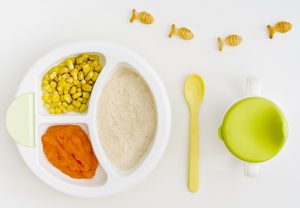Eating a wide variety of vegetables and fruits throughout the day ensures an adequate intake of vitamins, minerals, phytochemicals, dietary fibre and water. They help protect your child against diseases later in life, including heart disease, some cancers and other diet-related conditions, and can help in tackling obesity.

Research confirms that vegetables and fruits offer various benefits to our health. In fact, The Maltese Dietary Guidelines for Children recommends that children should have 3-5 servings of vegetables and 2-3 servings of fruit daily. On the other hand, research also shows that too many children do not consume enough of these foods.
Some children find it hard to eat vegetables and fruit but there are many strategies to encourage your children to eat more of these foods.
Here are a few:
• Children are more willing to eat the food they themselves have chosen and prepared so involve them. Ask them to pick out some vegetables and fruit at the greengrocer or farmer’s market or ask for their help in meal preparation. You can also involve your children in deciding what goes into their lunchboxes, meals and snacks; asking questions such as, ‘Do you prefer a pear or some grapes today?
• Children prefer foods that are familiar, so get them to appreciate the colours, smells and shapes of vegetables and fruit. Offer various vegetables and fruit regularly. Never assume your children dislike something from past experience or because you do not like it yourself. For some foods, it may take multiple times before a child acquires a taste for it.
• Present different textures of vegetables and fruits. Some children prefer smooth food, whereas others like lumpy, and some children like crisp foods, but others like soft.

• Encourage children to try new vegetables and fruits regularly and praise them when they do so.
• Introduce a new vegetable or fruit alongside familiar or favourite ones.
• Do not react when your children refuse to eat. Instead respond calmly to send the message that they cannot use food to seek attention.
• Offer vegetables and fruits in appropriate portion size and think about presentation. Children love bite-sized foods so peel, slice or chop bigger vegetables and fruits. Get creative and make it fun; cutting a vegetable or fruit into a fun shape makes it more exciting to eat. Think colour! Try serving vegetables and fruits of different colours.

• Keep vegetables and fruits within reach and children are more likely to make healthy choices.
• DIY! Eat and enjoy vegetables and fruits yourself. It is important for children to see their parents eating these foods; children are more likely to copy what they see.
• Encourage relatives or friends to offer vegetables and fruits to your children.
• Play hide and seek with your fussy eaters – If your children would not eat obvious vegetables, blend them up and hide them in pasta sauce, homemade burgers or nuggets, pies, tomato base for pizza, cake… practically anything. Begin by adding small amounts of pureed vegetables to the mixture and increase the amount, teaspoon by teaspoon, over the days and weeks. This way, they simply won’t notice the changing taste and appearance, but within a few weeks, their taste buds will have become used to the vegetable. Shhh… 😉
It might be challenging for some children to consume the recommended servings of vegetables and fruit but it’s important to keep working on it. If you help your child develop healthy eating habits now, it sets up healthy habits for life.
